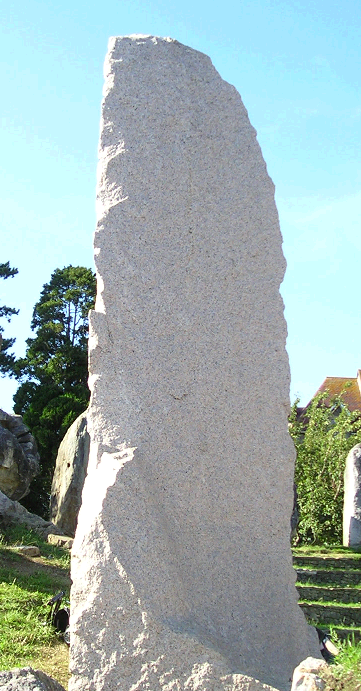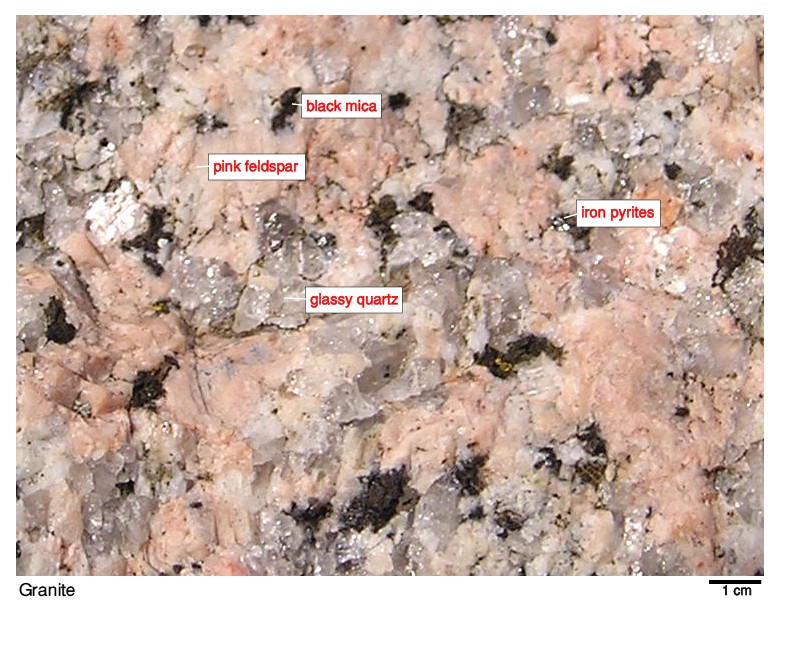|
About the rock: This 5m tall monolith is Rosa Porinno Granite The rough and naturally fractured surfaces reveal the even-grained texture. It contains two feldspars, one of which is pink giving the rock its overall colour; the other is colourless. Whatever sunlight is available will produce a mirror reflection from the cleavage faces of the crystals. Glassy quartz forms a groundmass and the rock is flecked with black biotite mica.The surfaces of this Spanish granite are excellent for a close quarters study of the mineral make-up and texture of a typical granite. If necessary, a light spraying with water will clarify this stone’s details, as it will in the cases of the other 11 stones.
This rock was intruded into the slaty rocks of Cantabria around 290 million years ago (Variscan Orogeny); it shares affinities with the granites of Sardinia, Brittany and Savoy as well as those of Cornwall and Devon. The size of the crystals tell of a slow cooling from a silica-rich melt which probably intruded to within 5 or 6 kilometres from the surface of the crust. It has undergone a degree of metamorphism during the Alpine Orogeny when the Pyrenees were formed. There is no serious deformation, but just a hint that the feldspars may be lightly kaolinised.
|
Place of origin In north-west Spain, a few kilometres inland from Vigo, the historic seaport on the Galician coast, is the enormous quarry of Fernandez y Martinez de Granitos company, one of the largest granite quarries in Western Europe. At one time (1980-95), this quarry supplied its stone to most new building constructions in the EU, including Britain. Porrino, which gives the rock its name, is the inland village of the quarry site.
|

